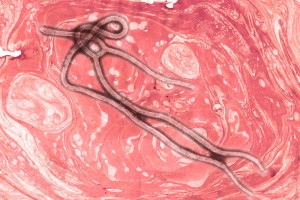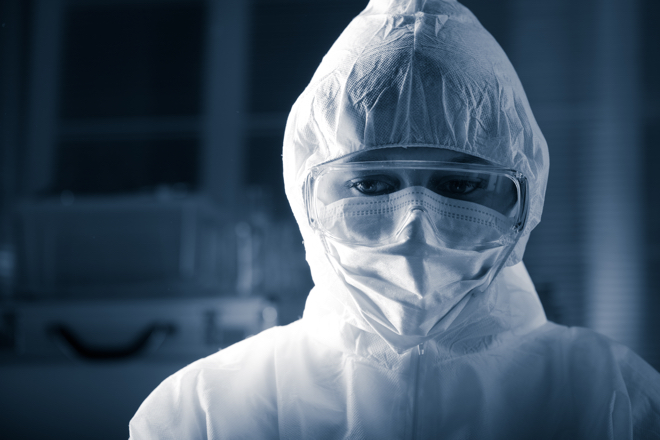We considered opening with “an Amish missionary and an amusement park patron walk into a bar…” but the measles outbreak is most definitely not a joke.
Last year, there were 23 outbreaks of measles in the United States and 644 confirmed cases—the most since the disease was declared all but eliminated back in 2000. The 2014 outbreak was reportedly caused by an Amish missionary who’d traveled to the Philippines where he caught the measles, then returned to his community where many friends and family had refused the measles vaccine—and continued to pass along the disease.
Yesterday, new data released by the CDC shows that 288 cases of measles have been reported in the US since the beginning of the year and over 2,000 people are being monitored in Arizona after someone was exposed to an infected guest at Disneyland in December. And it may be far from over.
Measles is the one of the most infectious diseases known to man
A person with measles can cough in a room and then leave—and hours later (if you are unvaccinated) you could catch the virus from the droplets in the air that they left behind. No other virus can do that.
Measles is an entirely preventable illness
Nearly everyone who gets the proper vaccine will never get sick with measles, even if they’re exposed.
“The current increase in measles cases is being driven by unvaccinated people, primarily U.S. residents, who got measles in other countries, brought the virus back to the United States and spread to others in communities where many people are not vaccinated, says one assistant surgeon general, Dr. Anne Schuchat.
The measles and anti-vaxxers
It’s not just about “anti-vaxxers” (the people refuse vaccinations for a variety of reasons). It’s also about people who CAN’T be vaccinated.
Only about two percent of the U.S. population outright refuses vaccines. But every person counts. Vaccinations don’t just protect you or your children it protects everyone around you. People who are already ill and weakened immune systems, not to mention people who are unable to be vaccinated. The measles vaccine, for instance, is not licensed for use on babies younger than 12 months. That means that, for the first year of life, babies depend on the fact that everybody else around them gets vaccinated.
In most cases, measles isn’t deadly, but it’s almost always debilitating, bringing on a weeks-long fever, rash, and painful, watery eyes. According to an article from Vox, Up to forty percent of people experience serious complications, such as pneumonia and encephalitis (or swelling of the brain). One or two children in 1,000 die. Worldwide, measles kills 400 people a day, says Disease Daily. Yet it costs less than a buck to avoid.
The extremely high cost of a measles outbreak
The economic toll of measles is also astounding. Researchers at the Centers for Disease Control and Prevention (CDC) calculated that outbreaks in 2011—a total of just 107 cases—cost state and local taxpayers up to $5.3 million. And USA Today reports that a 2008 outbreak in San Diego cost taxpayers $10,376 per case to trace contacts and administer vaccinations. Why? Due to its high infectiousness and the potential severity of complications, a measles outbreak often constitutes a serious public health event entailing a vigorous response from local public health departments and can involve multiple states and counties. The World Health Organization (WHO) says during 2000-2013, measles vaccination prevented an estimated 15.6 million deaths making measles vaccine one of the best buys in public health.
Before the measles vaccine was introduced in 1963, there were four million cases (with 48,000 hospitalizations and 500 deaths every year). By 2000, the virus was declared eliminated in the U.S. because enough people were immunized so that outbreaks were uncommon—and deaths from measles were scarcely heard of. Take that, anti-vaxxers.
Do you have questions about measles and vaccines? Read this article by Julia Belluz: 9 things everybody should know about measles.



